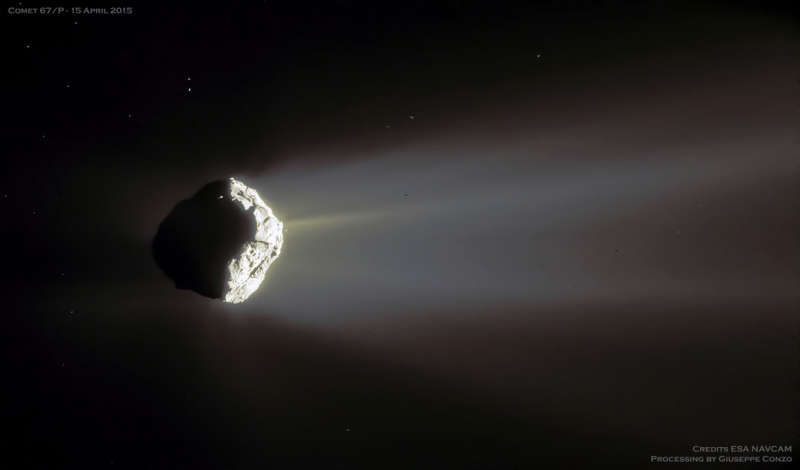Comet Churyumov Gerasimenko in Crescent

Explanation:
What's happening to Comet 67P/ChuryumovGerasimenko?
As the
3-km wide comet moves closer to the Sun, heat causes the nucleus to
expel gas and dust.
The
Rosetta spacecraft
arrived at the
comet's craggily double nucleus
last July and now is co-orbiting the Sun with the
giant
dark iceberg.
Recent
analysis of data beamed back to Earth from the
robotic Rosetta spacecraft has shown that water being expelled by 67P has a
significant difference with water on Earth, indicating that
Earth's
water could not have originated from ancient collisions with comets like 67P.
Additionally, neither Rosetta nor its
Philae lander detected a magnetic field around the comet
nucleus, indicating that
magnetism might have been unimportant in the evolution of the early Solar System.
Comet 67P, shown in a
crescent phase in false color,
should increase its evaporation rate as it nears its closest approach to the Sun
in 2015 August,
when it reaches a Sun distance just a bit further out than the Earth.
Authors & editors:
Robert Nemiroff
(MTU) &
Jerry Bonnell
(USRA)
NASA Web Site Statements, Warnings,
and Disclaimers
NASA Official: Jay Norris.
Specific
rights apply.
A service of:
LHEA at
NASA /
GSFC
& Michigan Tech. U.

